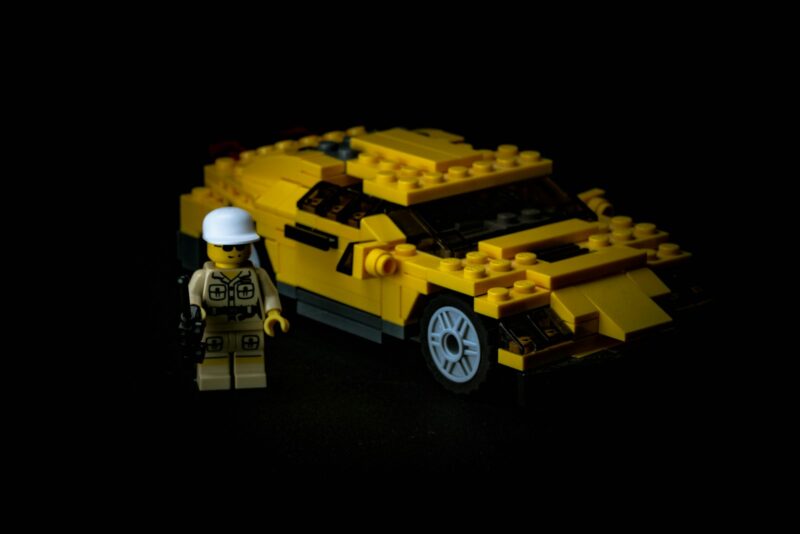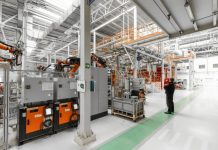A variety of products, including toys, hobbies, and production parts, are made from the malleable and sturdy ABS (Acrylonitrile Butadiene Styrene). Glueing together ABS components is a typical and successful method of assembly. Choosing the correct glue and applying it correctly are just two of the many things covered in this comprehensive guide on attaching ABS.
Why is ABS used so often in manufacturing?
Because of its many desirable qualities, the ABS (Acrylonitrile Butadiene Styrene) polymer has recently attracted the attention of numerous companies. In the corporate sector, ABS stands apart for the following reasons:
1. Affordable: ABS’s low production costs are a major selling point for the material. Production costs for ABS are lower than those of other polymers. For many applications, this makes it an economical option.
2. Easy to manufacture: Because of its reputation for being easy to manufacture, ABS streamlines the manufacturing process. Standard tools are sufficient for cutting, chopping, drilling, and shaping, allowing for rapid production with minimal downtime and labor expenses.
3. Recyclability: ABS outperforms several other commercial polymers when it comes to biodegradability. Reducing waste and environmental damage is one way in which recycling helps make industrial practices more eco-friendly.
4. Versatility: The fourth benefit is its versatility; ABS’s malleability makes it useful in many different industries. The addition of additives can enhance its resistance to flames, heat, and impacts, among other attributes, expanding its application in a variety of manufacturing contexts.
5. Various applications: ABS’s one-of-a-kind qualities make it useful in an enormous variety of industrial contexts. Automobile dashboards and instrument panels, industrial machinery coverings, safety helmets, medical supplies, and refrigerator panels are among the many things that manufacturers frequently utilize.
Properties of ABS
How Effectively It Sticks and Bonds: ABS’s surface energy of 42mJ/m² influences its adhesive and bonding capabilities.
Service Temprature: With a maximum service temperature of 89°C, ABS is suitable for a wide variety of industrial applications.
Melting Point: ABS may be bent and molded in several ways because of its high melting point of 100°C.
Glueing ABS: How’s it Done?
1. Choosing the Appropriate Adhesive
When putting ABS parts together, you can use a variety of adhesives, each of which is ideal for a certain task or personal preference. Many people often choose:
a) Model Airplane Cement
For those who enjoy working with ABS, Model Airplane Cement is an excellent adhesive.
Purchase Link: Amazon
Price: $5
b) ABS pipe cement
For realistic models that must be watertight or able to withstand high temperatures, such as plumbing fixtures, ABS pipe cement is an excellent choice.
Purchase Link: The Home Depot
Price: $7.54
c) Cyanoacrylates (Crazy Glue)
For visual models that won’t be subjected to hard conditions, cyanoacrylates (Crazy Glue) are an excellent choice because they form clear joins.
Purchase Link: Amazon
Price: $5
d) Epoxies, Polyurethanes, and Structural Acrylic Adhesives
Epoxies, polyurethanes, and structural acrylic adhesives have many applications due to the versatility of joining ABS.
2. Getting ready and using
Always make sure the ABS surfaces are clean and dry before applying adhesive. Verify that they are clean, dry, and devoid of any debris that could impede the bonding procedure. To double-check that everything is in its proper place, try putting the parts together in a dry run.
Pay close attention to the manufacturer’s instructions when applying the glue; these will typically contain safety precautions and recommendations for air circulation. Put on your PPE to shield yourself from potential hazards.
Allow the glue sufficient time to set in order to ensure a firm connection for models with interlocking parts. To hold the parts in place as the glue cures, utilize mechanical tools, such as dowels, for flat joints. Clamping the components together while bonding might increase their stability; nevertheless, you must be cautious not to attach the clamps to the item unintentionally.
3. Choosing the Best Adhesive for Your Project
The adhesive you select is heavily dependent on the intended use of the final product. When aesthetics are paramount and durability is not an issue, cyanoacrylates are an excellent material for visual models due to their transparency and unseen joints.
For larger projects or practical models that require durability and resistance to heat and moisture, ABS pipe cement is an excellent choice. This particular glue ensures that the bonding is robust enough to withstand demanding tasks.
Tips for Success
Remember these suggestions to achieve the best outcomes when you glue ABS:
- Avoid getting glue or other spills on the surface; doing so will prevent damage and additional cleaning.
- Eliminate unsightly stains by removing excess glue immediately before it dries.
- Take extra precautions to avoid getting adhesives on unintended surfaces when working with them.
- Try using several glues until you discover the one that suits your project the best.
Fixing the Gaps in ABS Plastic
While 3D printers are generally accurate, they can have some limitations. When you attempt to assemble your ABS plastic parts, you may find that there are spaces between them because your designs were incorrect or because tiny bits of plastic were either damaged or required sanding. Your outfit is still not a bust, though. Careful assembly will allow you to conceal the imperfections and make it appear as though the print was nearly flawless.
To avoid any misalignment, align the sides with the most details before you glue them together. If you want to keep your ABS plastic from getting holes, this is a good strategy to use. You should use super glue to attach the two halves of your helmet together, as one of them may contain more intricate carvings into the ABS. Never again will you need to key in that data. After that, you can utilize a distinct adhesive or filler to selectively seal off the largest gaps. No one will ever notice the difference once you sand, prime, and paint it.
Which is the best 3D printing software?
There are a lot of best 3D printing software available and SelfCAD is a good example. SelfCAD is an easy to use 3D modeling software that runs both online as well as on Windows and Mac. SelfCAD combines tools for 3D modeling, sculpting, rendering, and 3D slicing and you don’t need to switch to a separate program. After creating your 3D models, you can use the in-built online slicer of SelfCAD to prepare it for 3D printing by generating the Gcode to send to your 3D printer.
SelfCAD also offers interactive tutorials, many Youtube videos and an academy to help you learn 3D modeling easily.
Final Verdict
If you want to work with ABS, one simple yet crucial skill is knowing how to glue pieces together. With the correct adhesive, surface preparation, and application technique, you can create strong, long-lasting bindings for a variety of applications. Whatever you’re working on, from detailed models to functional prototypes, learning how to glue ABS is essential.








